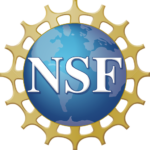To explore Hawaiʻi and its places, people, and their relationships both in-person and online
Introduction
This unit has been designed to explore Hawaiʻi and its places, people, and their relationships with one another while analyzing how computing and technology can better our lives by utilizing electronic devices and programs in everyday tasks.
Students will be prompted to observe their surroundings as well as looking inward to determine best practices in the computer science classroom, online, and within their communities. By drawing from learners’ past experiences, personalities, and culture, these culturally relevant computing lessons can aid the class in making informed and well-rounded decisions.
This module uses current curricula created by Code.Org and the Hawaiʻi Department of Education.
Student Objectives
- Identify digital citizenship terminology
- Compare and contrast the similarities and differences between various scenarios that may happen online and in-person
- Explain the difference between private and personal information
- Explain why it is risky to share private information online
- Identify the reasons why people share information about themselves online
- Understand social and economic issues connected to computing
- Recognize the creative nature of computing
- Develop their own solutions to various computational inequities
Critical Consciousness Statement
“As the world becomes further immersed into the electronic age, the barriers between physical and virtual reality become more apparent. The anonymity and distance provided by online communication can lead to individuals behaving in ways they wouldn’t in face-to-face interactions. However, by recognizing that behind every electronic device is a human-being, we may begin to mālama one another and empower a sense of aloha.”
CSTA K-12 CS Standards
| Standard | Description |
|---|---|
| 1B-IC-18 | Discuss computing technologies that have changed the world, and express how those technologies influence, and are influenced by, cultural practices. |
| 1B-IC-19 | Brainstorm ways to improve the accessibility and usability of technology products for the diverse needs and wants of users. |
| 1B-NI-05 | Discuss real-world cybersecurity problems and how personal information can be protected. |
Nā Hopena Aʻo (Hā)
| Standard | Description |
| Belonging | I stand firm in my space with a strong foundation of relationships. A sense of Belonging is demonstrated through an understanding of lineage and place and a connection to past, present, and future. I am able to interact respectfully for the betterment of self and others.
|
| Responsibility | I willingly carry my responsibility for self, family, community and the larger society. A sense of Responsibility is demonstrated by a commitment and concern for others. I am mindful of the values, needs and welfare of others.
|
| Excellence | I believe I can succeed in school and life and am inspired to care about the quality of my work. A sense of Excellence is demonstrated by a love of learning and the pursuit of skills, knowledge and behaviors to reach my potential. I am able to take intellectual risks and strive beyond what is expected.
|
| Aloha | I show care and respect for myself, families, and communities. A sense of Aloha is demonstrated through empathy and appreciation for the symbiotic relationship between all. I am able to build trust and lead for the good of the whole.
|
| Total Well-being | I learn about and practice a healthy lifestyle. A sense of Total Well-being is demonstrated by making choices that improve the mind, body, heart and spirit. I am able to meet the demands of school and life while contributing to the wellbeing of family, ‘āina, community and world.
|
| Hawai‘i | I am enriched by the uniqueness of this prized place. A sense of Hawai‘i is demonstrated through an appreciation for its rich history, diversity and indigenous language and culture. I am able to navigate effectively across cultures and communities and be a steward of the homeland.
|
Funding Note

This work was supported by the National Science Foundation’s
Division of Research on Learning (Grant #2122874).
This module was created and evaluated by Kaimana Namihira.
Please contact aCRC808@hawaii.edu or visit https://coe.hawaii.edu/acrc/ for any inquiries.
